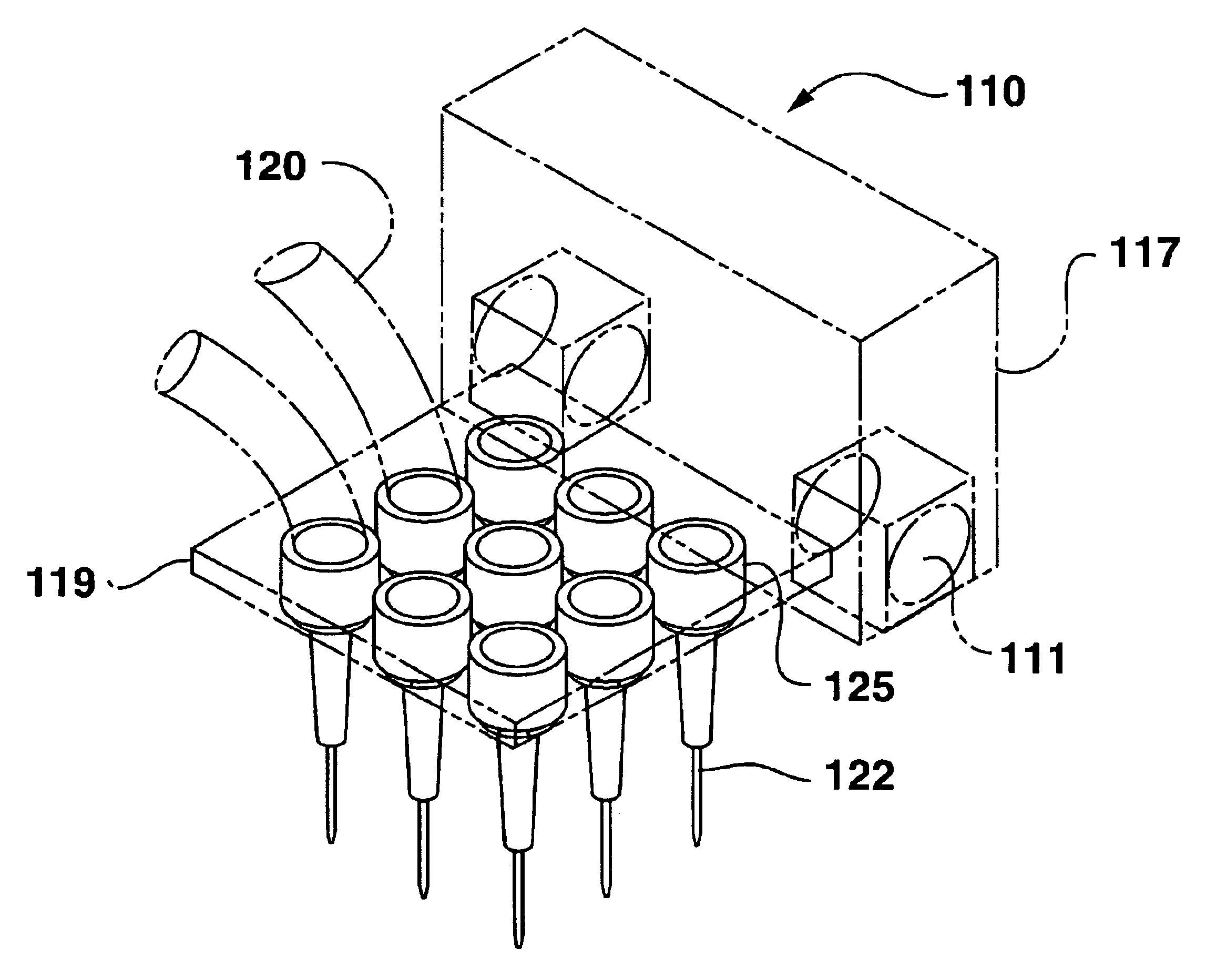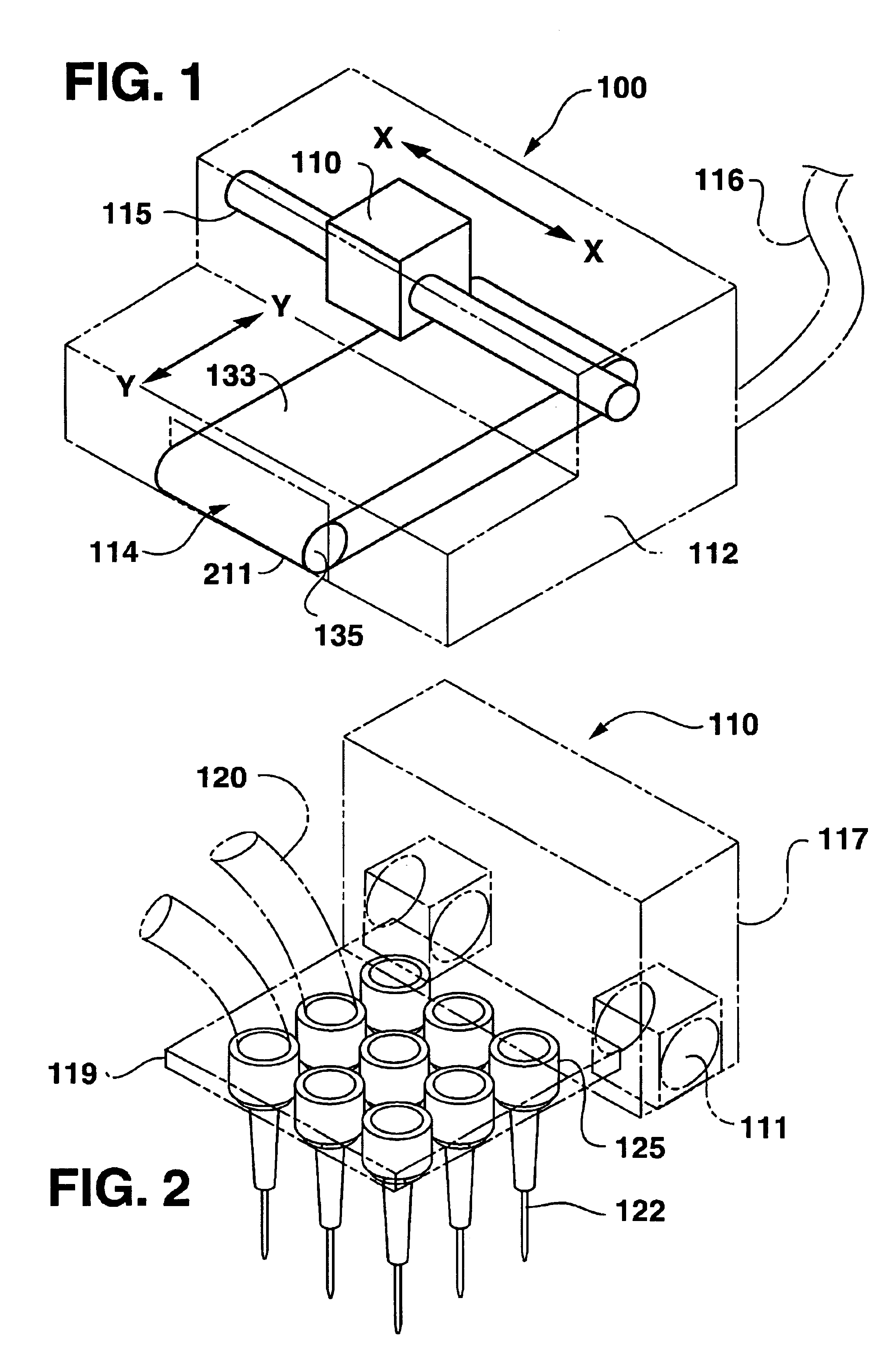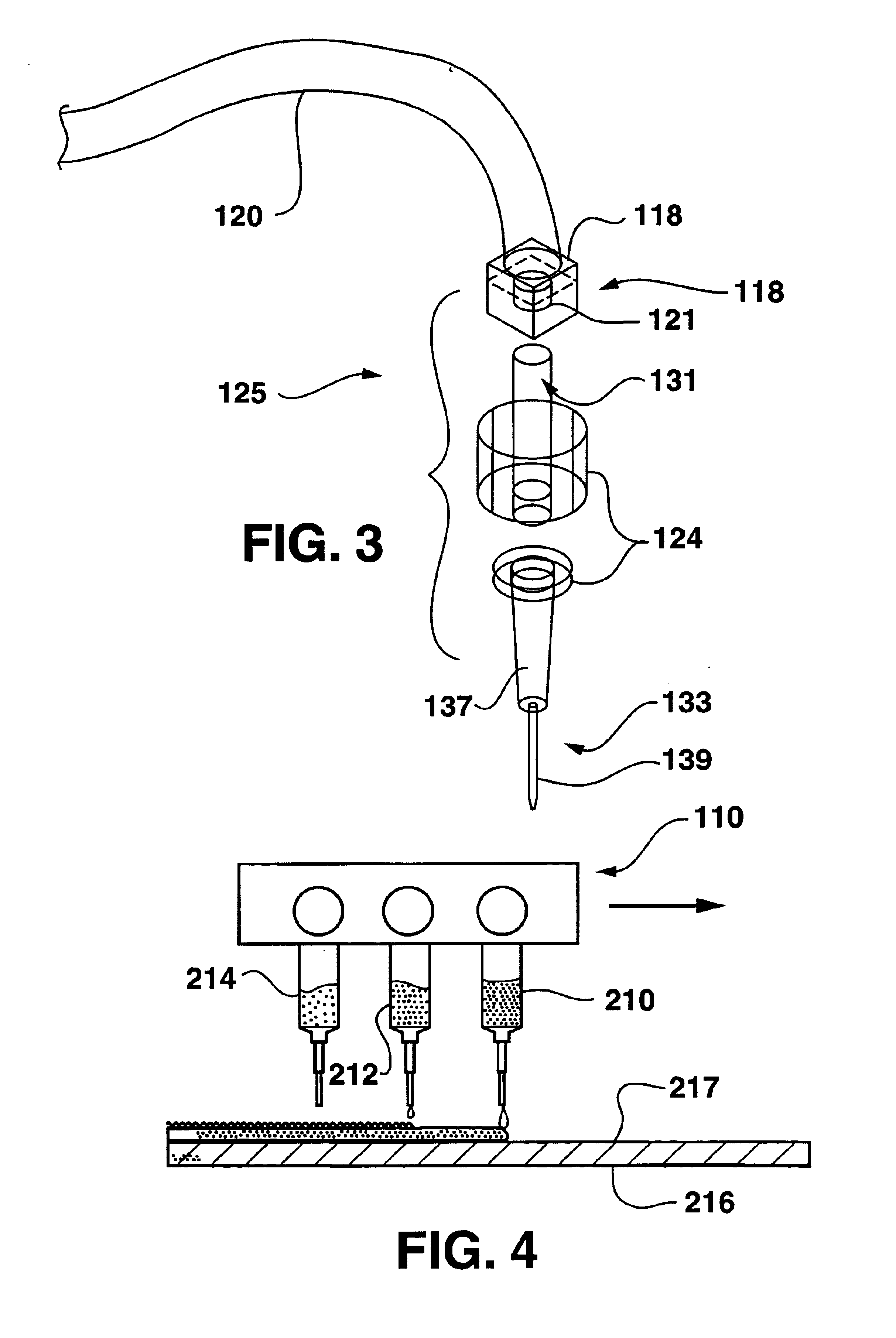Ink-jet printing of viable cells
- Summary
- Abstract
- Description
- Claims
- Application Information
AI Technical Summary
Benefits of technology
Problems solved by technology
Method used
Image
Examples
example 1
[0075]The ability to print viable bacteria cells onto a substrate was demonstrated. Initially, 1.5 milliliters of a pre-warmed sterilized Trypticase® Soy Agar solution (Beckton Dickinson & Co, Cockeysville, Md.) was poured into a first 35-millimeter Petri dish, and 25 milliliters of the Trypticase® Soy Agar solution was poured into a second 100-mllimeter Petri dish. The first Petri dish contained a sterilized coverslip substrate, while the second Petri dish contained a microscope slide substrate. The solutions were allowed to cool to room temperature, thereby forming a thin gel layer on the substrates. The substrates were individually taped to a piece of paper with double sided tape for feeding to a printer.
[0076]E. coli DH5α cells (Gibco-BRL, Life Technologies, Rockville, Md.) were grown overnight at 37° C. on a Trypticase® Soy Agar plate. Two loopfuls of organisms (representing approximately two large colonies) were transferred into a centrifuge tube containing 5 milliliters of st...
example 2
[0084]The ability to print mammalian cells onto a substrate was demonstrated. Initially, bovine aortal endothelial cells and a smooth muscle cell line (American Type Culture Collection, ATTC) (passage 10) were trypsinized and resuspended in a modified Eagle's medium (MEM) and 10% fetal bovine serum (FBS), with a concentration of 1×105 cells per milliliter. The cell suspensions were then printed onto a reconstituted basement membrane gel (Matrigel™, available from Collaborative Biomedical Products of Bedford, Mass.) and a 3 milligram per milliliter collagen gel (available from Elastin Products, Inc., Owensville, Mo.) utilizing a HP® 660C printer that was modified in the same manner as described for the HP® Desktop 550C printer above in Example 1. In addition, a new printer head was installed, similar to that shown in FIG. 2. Specifically, an individually wrapped, sterile 30-gauge needle (Becton Dickinson) was aseptically filled with the cell suspension, and screwed into the printer h...
example 3
[0087]The ability to use a gelling polymer to assist in the printing of cells was demonstrated. Specifically, a poly[N-isopropylacrylamide-co-2-(N,N-dimethylamino)-ethyl acrylate] thermogelling copolymer, denoted henceforth as K-70, was used. The copolymer had a molecular weight of 510 kiloDaltons, as estimated by gel permeation chromatography (GPC) with a light-scattering detector. The polymer synthesis and characterization is as described in Injectable Gels for Tissue Engineering, Anat. Rec., by Gutowska, Jeong, and Jasionowski 263:342-349 (2001).
[0088]A 10 wt. % solution of the copolymer in cold deionized water was formed, placed into an external ice bath, and stirred magnetically overnight. After the polymer was completely dissolved, the pH of the solution was adjusted to 7.0 with 0.1 M NaOH using pH strips. The polymer solution was sterilized for 30 minutes in an autoclave, cooled, and then re-dissolved. The solution was allowed to become completely clear and mixed well before ...
PUM
 Login to View More
Login to View More Abstract
Description
Claims
Application Information
 Login to View More
Login to View More - R&D
- Intellectual Property
- Life Sciences
- Materials
- Tech Scout
- Unparalleled Data Quality
- Higher Quality Content
- 60% Fewer Hallucinations
Browse by: Latest US Patents, China's latest patents, Technical Efficacy Thesaurus, Application Domain, Technology Topic, Popular Technical Reports.
© 2025 PatSnap. All rights reserved.Legal|Privacy policy|Modern Slavery Act Transparency Statement|Sitemap|About US| Contact US: help@patsnap.com



